So one time I wrote a cover letter. In the midst of it, while talking about my interest in wine, I half-jokingly stated that I could find wines to pair with a zombie apocalypse. Because why not? My major in university combines areas of science and art; wine itself combines science and art; so why not pair wine with brains, despair, and the rotting undead? (The cover letter was for some computer science co-op job. I’m such an idiot.)
And so I gave it serious thought.
Clearly, in a post-apocalyptic sitch, we’re gonna need to find a balance of delicious and practical. It’s inevitable. I mean – deliciousness is nice, but you’re going to have to really think – will the slender Alsatian bottle give me the best swing?! Will a Pinot Noir bottle take up too much space in my zombie slaying kit?! Are half bottles even worth it?!
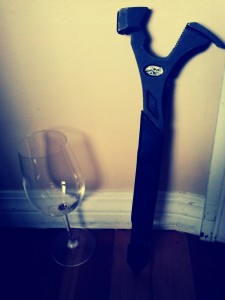
Let’s start, shall we?
1) (Burgundian) Pinot Noir/Cahors Malbec/Wines affected by Brettanomyces
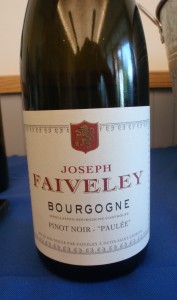
So Burgundian Pinot, especially aged – and done right – tends to have unique secondary characteristics reminiscent of barnyards and animal shit – along with its typical red berry aromas – so they can match the rotting zombie atmosphere. Typically light and low in tannins, wines from this region can have a bit of a savoury quality too. And the high acidity makes it easy to pair with, whether you be rationing your canned meat or foraging stolen goods from the supermarket.
But I mean – if Pinot isn’t badass enough (and I totally understand, because ironically it’s seen as such a pretentious and high-class grape) then go with a Cahors Malbec. Malbec has made a home in Argentina, but they can be too fruity for barren wasteland. Unfortunately, production of Malbec around the Bordeaux region has dropped since the introduction of phylloxera (a vineyard pest), but Cahors continues to produce characterful Malbec wines: their gaminess and tannins pair well with bigger meats and general badassery.
Even better are wines “contaminated” by the unique yeast strain Brettanomyces: these even result in similar, sometimes rancid/wet horse/manure-ish aromas, often considered a wine fault, but many agree that in small amounts it adds complexity. As if figuring out how to sneak past that one zombie who looks like your old Math prof wasn’t complex enough.
2) (Vintage) Champagne
All Champagne is sparkling wine, but not all sparkling wine is Champagne. Getting that wrong in casual wine talk is like annoying the hell out of a grammar pedant with you’re/your; debating evolution with a biologist; or spilling spaghetti sauce on the floor in front of your mom and then not cleaning it up because you suck. It’s definitely cringeworthy, but I probably wouldn’t correct you because I’d feel like a pretentious dilweed. But who cares? YOU’RE LIFE IS AT STAKE.
According to Hugh Johnson and Jancis Robinson’s The World Atlas of Wine, non-vintage Champagne is best served slightly warmer than other sparkling wines, and vintage Champagne even warmer. Now – if we’re talking practicality here, this is perfect, because maybe you don’t have refrigeration, but maybe the outdoors are chilly enough that you can enjoy it. That – and Champagne is obviously sparkling, and is one of the several wines that are fit to sabre. Are you kidding me? Let’s use this as a weapon or a distraction. But I mean, I guess if you’re using it as a weapon, you wouldn’t be able to drink it until later. But whatever. Multitask – Napoleon sabred this shit off the top of his horse. No time for sobriety in zombie domination. Except for maybe me, because I have the co-ordination of room-temperature cookie dough.
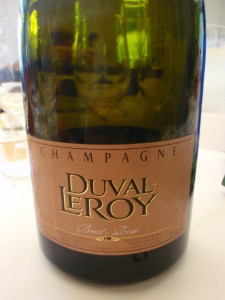
Because of the traditional method in which Champagne is made, it tends to have yeasty and bready notes, with fruit declining with age, and these unique bready characteristics increasing with age. This method also results in soft yet persistent bubbles. A downside is that you won’t be able to tell who’s foaming at the mouth due to zombie disease. Less Champagne for them.
Champagne is tough at its price point, so an alternative includes Crémant, which is in general, a French sparkling wine made in the traditional method but is not made in the Champagne region. Another thing you could look for are sparkling wines from Limoux, which many claim to have predated Champagne as the first sparkling wine. The one I’ve had has had nice nutty characteristics for a delicious price point. Spanish Cava wines are nice, too – they are also produced in the traditional method and some may be yeasty, but some can often be too simple.
3) Moscato d’Asti
If you’re just a little more cautious, maybe choose Moscato d’Asti. Moscato d’Asti is a frizzante wine, meaning that it isn’t fully sparkling (therefore you can’t sabre it) – but what it does have is a medium sweetness for a short carby kick, in case you need some energy to whoop some zombie ass. Furthermore, this wine smells delicious – sweet fresh fruit, tangerines, apples, and floral notes. It’ll remind you of better spring days while looking at dilapidated buildings, broken windows, and rising smoke (which essentially is what UBC looks like half of the time due to construction, anyways). Pair this with fresh fruit, light desserts, or salty snacks. I mean – while you can, though.
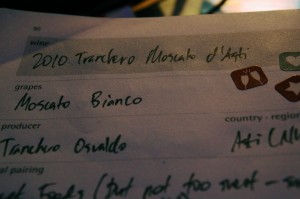
There are other Moscato wines out there, not from Asti – and if I remember correctly, Jancis Robinson did say it was hard to make a bad Moscato wine. Moscato wines from the Asti region are permitted to be sweeter and lower in alcohol. It is likely that other non-Asti Moscato wines will be higher in alcohol, but that’s fine. Again with the sobriety thing.
Having worked in the industry, I can say that Moscato wines are somewhat unpopular and declining in fashion if not already démodé. More than often, customers come in and ask for something “not sweet” (and by sweet they really mean fruity) and so anything with a touch of residual sugar – or even strong fruit – makes people angry. That and Moscato is a sweet, cheapish wine: all too often I would imagine customers think of it as the Snooki of the wine world. Okay, that was too far. Maybe the Jessica Simpson of the wine world. Or, like, Paula Abdul. I am quickly losing my grasp on this analogy.
4) Wines affected by noble rot/late harvest wines/Icewine
Aha. It wasn’t obvious before, but why not choose wines whose grapes have been affected by a rot and shrivel up and look like rotting brains?! It’s perfect. But yes – grapes affected by Botrytis cinerea shrivel up because the fungus prevents the grape from retaining moisture, and thusly the grape is left concentrated with acids, sugars, and deliciousness, and ends up looking like a fugly furry raisin. For this to happen there needs to be specific weather conditions for the fungus to thrive: misty mornings and sunny afternoons. Too wet, and instead of the lovely noble rot, it may result in grey rot, which, although zombie-esque, probably results in something horrible-tasting and disease-inducing. It’s hard to explain what Botrytis tastes like – but the fungus does contribute something uniquely gingery, beeswax-y, honeyed, and spicy to the wine. It’s awesomely weird. Of course, these wines can be expensive like Sauternes from France (the ultimate dessert wine), but there are some value gems out there.
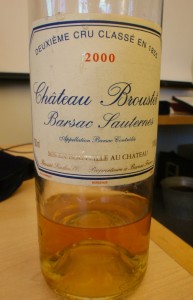
For perhaps a value zombied-out wine, you can try late harvest wines which are cool too but are less badass – they are simply left on the vine to dry up and concentrate as well, but this can lead to lighter wines. See Germany for Spätlesen, Auslesen, Beerenauslesen, and Trockenbeerenauslesen – some which may use grapes zombified by noble rot. And check out Chile for great value late harvest Sauv Blancs, which have a cool slight earthy-bitter quality to them. A couple days ago I yelled “AUSLESE!” in a scary zombie voice and scared my co-worker. It was fun. She was not amused.
Icewine! Freezes on the vine, obviously concentrates the yumminess, and then you make wine. There’s some kind of qualification for something to be an icewine, but that’s boring and no. Extremely appropriate if you’re in a glacial area, I guess. Perhaps more popular as an apocalyptic snack up here in Canada. Oh yes.
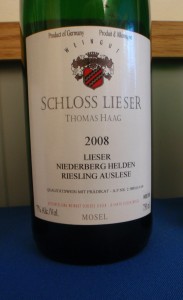
What SUCKS is that most of the affordable wines in this category come in half bottles, so you can’t swing them. In terms of practicality: I’m thinking maybe you can make like, mini petrol bombs with them or something. That’s a thing, right?
Other beverages that almost made the list:
1) Some Malbec titled “Del Fin Del Mundo”. I thought that was appropriate.
2) So is the “La Fin du Monde” beer.
3) Aged Alsatian Riesling – petrolly, long bottle. Great for whacking.
4) Sauvignon Blanc from Sancerre – some people think it’s total bullspit, but I swear that some Sancerre smells like grass and gunflint! Pair with the holy scent of your own gunflint.
If the world is ending I also want some Vouvray and super old luscious German Riesling.